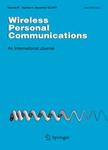版权所有:内蒙古大学图书馆 技术提供:维普资讯• 智图
内蒙古自治区呼和浩特市赛罕区大学西街235号 邮编: 010021

作者机构:Beijing Univ Posts & Telecommun Sch Comp Sci Beijing Key Lab Intelligent Telecommun Software & Beijing Peoples R China Fujian Normal Univ Sch Math & Informat Fujian Prov Key Lab Network Secur & Cryptol Fuzhou Fujian Peoples R China Fordham Univ Dept Comp & Informat Sci Bronx NY 10458 USA
出 版 物:《WIRELESS PERSONAL COMMUNICATIONS》 (Wireless Pers Commun)
年 卷 期:2018年第98卷第1期
页 面:699-723页
核心收录:
学科分类:0810[工学-信息与通信工程] 0809[工学-电子科学与技术(可授工学、理学学位)] 08[工学]
基 金:National Natural Science Foundation of China [61332005, 61502051] Funds for Creative Research Groups of China Cosponsored Project of Beijing Committee of Education Beijing Training Project for the Leading Talents in ST [ljrc201502] Foundation of Fujian Province Educational Department of China [JAT170114]
主 题:Mobile crowd-sensing Location privacy Participant density User accountability Aggregate statistics
摘 要:Mobile crowd-sensing applications produce useful knowledge of the surrounding environment, which makes our life more predictable. However, these applications often require users to contribute, consciously or unconsciously, location-related data for analysis, which gravely encroaches users location privacy. Aggregate processing is a feasible way for preserving user privacy to some extent, and based on the mode, some privacy-preserving schemes have been proposed. However, existing schemes still cannot guarantee users location privacy in the scenarios with low density participants. Meanwhile, user accountability also needs to be considered comprehensively to protect the system against malicious users. In this paper, we propose data aggregate statistics schemes with participant density-independent location privacy-protection for mobile crowd-sensing applications. First, we make use of multi-pseudonym mechanism to overcome the vulnerability due to low participant density. Then, to further handle sybil attacks, we propose two schemes based on the Paillier cryptosystem. In the basic scheme, we leverage non-interactive zero-knowledge proof technology to verify users sensing data. In the advanced scheme, we present a novel verification framework, which also addresses the problem of user accountability, but at the cost of introducing a new entity. Finally, the theoretical analysis indicates that our scheme achieves the desired properties, and the performance experiments demonstrate that our scheme can achieve a balance among accuracy, privacy-protection and computational overhead.